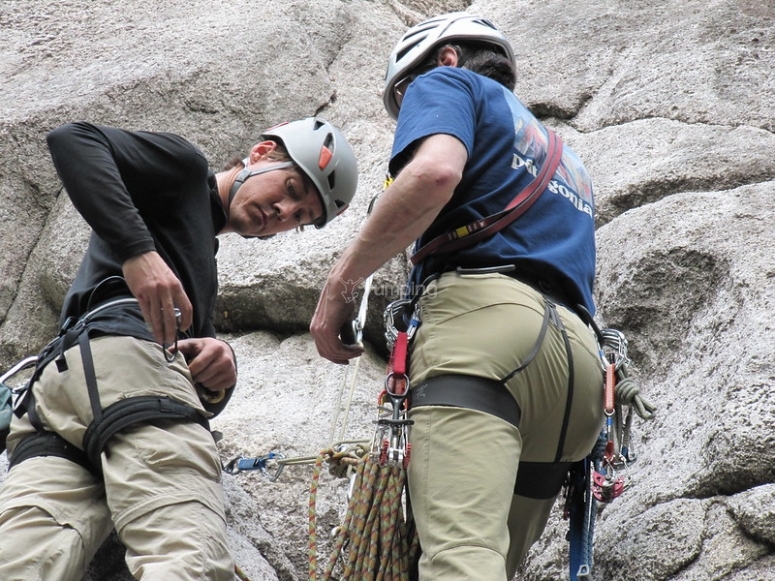
WHAT'S IN A NAME?
In this case, the name gives us a good idea of what a Tyrolean Traverse involves. Tyrolean means from Tyrol - that’s a region in the Austrian Alps - and to traverse means to cross. Put that together and you have something like a method of crossing something in a mountainous terrain, which is a pretty good place to start.
Using a line - either rope or cable - strung between two elevated points, climbers can transport themselves and their equipment through the air. Think of a jungle canyon rope bridge stripped down to the basics. Once you’ve secured yourself to the line (using harness, leash and carabiners as necessary), different techniques can be used to propel yourself along the line. Sometimes pulling with the hands is enough, while using prusiks or ascenders might be necessary, especially towards the end of a long traverse that sags in the middle.

WHEN IS A TYROLEAN TRAVERSE USED?
In traditional mountaineering, this kind of traverse is used to allow climbers to return to the main rock wall of an ascent after scaling a free-standing pillar, allowing climbers to avoid a tricky descent. Scree slopes, canyons and rivers can also be avoided in this way.
In the British Isles, which doesn’t have the kind of elevation that’s found in the Alps or other mountain ranges, a Tyrolean Traverse is more likely to be found on the coast or as part of a via ferrata. Climbers on the Atlantic coast of County Donegal, in the Republic of Ireland, use the traverse when ascending sea stacks. The party crosses open water by inflatable dinghy to the stack, climbs to the top, then uses a Tyrolean Traverse to return to the clifftops of the mainland. There’s a via ferrata in Cumbria, in the Honister Slate Mine, that includes travers of this kind alongside other installations such as ladders and walkways. It’s one of the most popular adventure tourism destinations in the Lake District National Park.
A Tyrolean Traverse can also be used as part of a mountain rescue operation, especially if an injured person is being transported by stretcher. Advanced tree climbing can also benefit from this technique, when a gap between two trunks must be crossed. Finally, a zip line, or zip wire, is essentially a Tyrolean Traverse in which the end point is at a lower elevation than the starting point, and gravity is enough to get you moving.

TYROLEAN TRAVERSE TRUTH TEST
Time for a pop quiz - can you identify the false record-breaking traverse from the following four?
- The longest ever Tyrolean Traverse was over 1.5 kilometres long, between the peaks of Malyovitsa and Orlovets in the mountains of Bulgaria.
- Brazilian adventurer Karina Oliani holds the record for the longest traverse over a lava lake, travelling 100 metres suspended above 1187ºC lava in the crater or the Erta Ale volcano in Ethiopia.
- The strangest Traverse on record was completed by a young Ukrainian couple, who made a 500-metre crossing of the Dnipro River attached to the line by piercings through the skin of their backs.
- The most weight on a Tyrolean Traverse ever recorded was over 700 kilograms, when two climbers and their mule crossed a river in the Indian Himalayas.
















